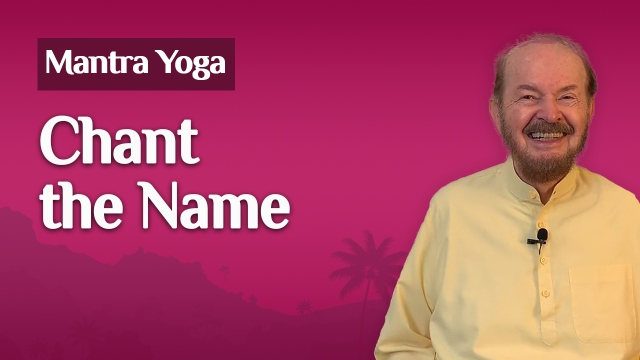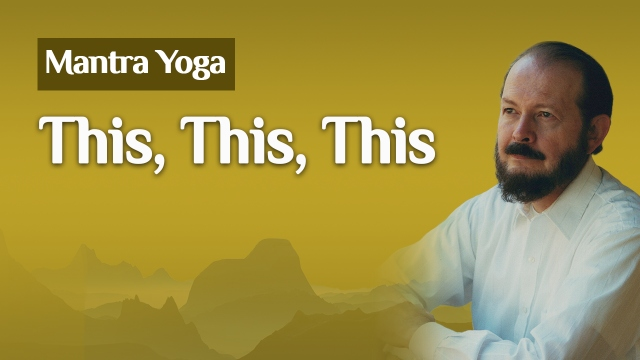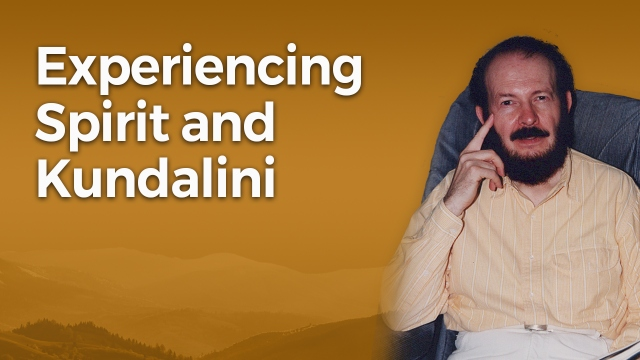
ONLINE SEMINAR
with RAMAKRISHNA ANANDA
Mantra Yoga
To be added for Find Your Way
Mantras (or mantrams) are words, phrases, or syllables which are chanted thoughtfully and with growing attention. Mantra yoga meditation involves chanting a word or phrase until the mind and emotions are transcended and the superconscious is clearly revealed and experienced.
Since the mind wanders so much, the music of a mantra easily rescues the mind and brings it back to the object of one’s meditation. Both the rhythm of it and the meaning of it combine to guide the mind safely back to the point of meditation — the higher consciousness or the specific spiritual focus.
We will add about 6 videos here.
Typical mantrams are: Aum, meaning Spirit, the Word of God, which creates, preserves, and transforms; or the Tibetan Buddhist mantram Aum Mani Padme Hum which usually is translated as “Om the jewel is in the Lotus Hum;” or the Hindu mantram Asato Ma Sat Gamayo which means “Lead me from the unreal to the Real.” (Or, more fully, “Lead me from attachment to the unreal into the Real.)
There are thousands of mantrams which are mainly from the ancient Sanskrit language. Possibly, in time, mantrams will be in English as well as Sanskrit. What such a development would require is a number of great meditators of modern day to be so attuned to the Lord and so at ease within the realms of higher consciousness that these new mantrams can easily be revealed to them. All mantrams are the result of a revelation, usually to some deeply meditating adept.
Generally mantram meditation involves chanting out loud at first until the body is calm and the atmosphere around oneself is serene and pleasant for meditation. Then whisper meditation almost automatically occurs and the life force begins to withdraw inward from “out-loud” chanting to whisper chanting. In whisper chanting the prana, the life force in the body, is balanced and harmonized, preparing the way for a deeper state of serenity — and of the balance of mind and emotions.
Whisper chanting easily dissolves and the life force moves even deeper within as you enter mental chanting. Mental chanting is practiced as long as thoughts are occurring to the mind. Whenever the mind is distracted, the mantram is simply chanted in the same area of the mind that the distraction is occurring. The mantram always wins if given a chance.
As the mantram frees you from one thought, then another, and also helps to dissolve distractions, the mantram then begins to reach the border of superconsciousness. Chanting becomes effortless. No effort, nor warding off distractions, is needed. Chanting becomes a pleasure. Peace and gentle joy fill your mind.
At this point of effortless mental chanting the mantram can do two things: a) it may dissolve into superconsciousness, or b) it may first help ventilate the subconscious mind, the storage house of your old thoughts, feelings, and memories which have been sadly neglected or not successfully dealt with. The mantram may create an opportunity for old thoughts and feelings, old fears and guilts, to be released, or healed, or let go.
What happens next? If your mental chanting first becomes effortless and ventilates the subconscious pressures, it then moves into your superconscious self. Or. the effortless chanting bypasses the subconscious basement of your mind, going directly into sublime superconsciousness. Either way, you arrive in your ecstatic, heavenly nature. The words of the mantram fall apart and fall away. Only the energy surge of the mantram remains as your awareness becomes blissful and full of light.
In this ecstatic stage of continuous rapture, you feel that you have arrived home. You sense that this is your true nature — and your true estate, which has been ignored due to the dominance of the mind, the emotions, and the outer world.
You will likely have a very pleasant fifteen to twenty minutes in the delight and comfort of your superconscious self; and then the mantram will begin to come out. You will find your higher consciousness wants to come back to the outer world. It wants to express, to touch your life and loved ones. The words of the mantram re-emerge in the mind and you reverse the whole process, going gradually into whisper — and then out loud — chanting.
Ultimately a mantram meditator lives in the ecstasy of the mantram, always aglow with the meaning and spiritual insight of the special syllables.
In order to be sure a mantram is right for you, seek a mantram only from a Guru or Master who is qualified to teach and initiate you.





